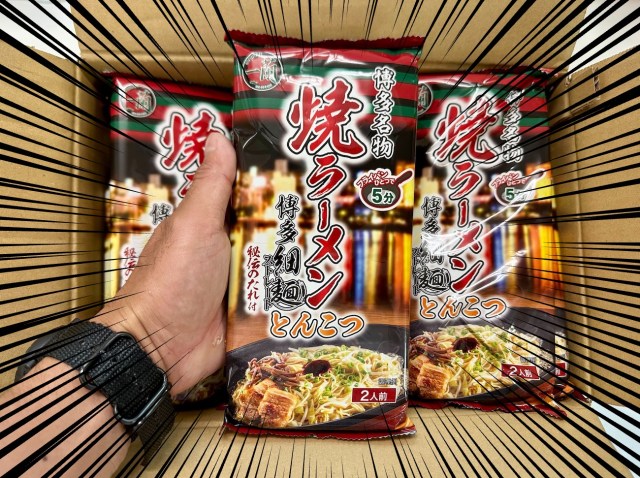
We get a taste of the famous chain’s new fried tonkotsu ramen, inspired by a dish served at food stalls in Hakata.
The other day, we received a call from a representative at Japanese ramen chain Ichiran, who told us, “We’re launching a product that’s never been seen before!”
As big fans of Ichiran ramen, we were excited to find out what it was all about, so we asked them to send us a sample of the product before it went on sale. When we received the package, we discovered that the new product was…
▼ …Yaki Ramen!
The word “yaki” means “grilled” or “fried”, and though we’ve tried yakisoba (fried buckwheat noodles) before, we’d never heard of yaki ramen. What’s more, these packs contain tonkotsu yaki ramen, which really piqued our interest as Ichiran hails from Hakata in Fukuoka Prefecture, the home of tonkotsu ramen, which is the style of noodles the chain specialises in.
▼ Ichiran’s tonkotsu ramen is so popular it’s even available in instant-noodle form.
According to the chain, fried ramen originated in the food stalls of Hakata, a city known for its yatai (food stall) dining scene, where it’s usually sold as a side dish. As the name suggests, yaki ramen is fried up in a frypan, so our reporter Masanuki Sunakoma got a pack out and popped it on a portable gas stove to try it out.
Opening it up, he found that each package is a two-person serving containing noodles, cooking oil, soup powder and spicy sauce. According to the instructions, this is all you need to make the meal, but you can add other ingredients like meat and vegetables to your liking. As this was Masanuki’s first time trying the product, though, he decided to keep things simple by frying it up without any extra ingredients, using only what was included in the pack.
First, he put 300 millilitres of water in the frying pan, and after bringing it to a boil, he added the cooking oil, conveniently marked “A” to mark it as the first seasoning pack that needs to be added to the mix.
▼ Then, he broke the noodles in half lengthways so they would fit in the pan, and added them to the heat.
Masanuki then left the mixture to boil for around two minutes, stirring with chopsticks to prevent the noodles from clumping together.
Now it was time to add seasoning “B” — the soup powder — and mix it in. After giving it another good stir, Masanuki waited until enough of the water had evaporated to get the broth to a thick consistency.
▼ At this point, his kitchen became filled with the tantalising aromas of an Ichiran restaurant.
Transferring the noodles onto a plate, Masanuki poured the spicy sauce on top and now he was ready to eat.
▼ Ichiran’s “secret red sauce” is so special only four people in the company know how to make it.
It certainly looked delicious on the plate, but it didn’t look like the piping-hot bowls of Ichran ramen Masanuki is used to eating. While the noodles themselves were still straight and thin, in true Hakata-style, the broth was pretty much non-existent.
The aroma of tonkotsu was certainly there, though, so Masanuki lifted a good-sized serving up to his lips and prepared himself for a mind-bending experience.
Slurping the noodles into his mouth, Masanuki swallowed and threw his head back in delight. It was absolutely delicious, and because the noodles had absorbed all the tonkotsu broth, they were packed with the umami richness of Ichiran, resulting in a delectably intense tonkotsu flavour.
Even though he’d cooked the noodles a little too long, resulting in a softer texture, they were still slippery and delicious. He couldn’t quite believe this easy-to-make meal could taste so good without the use of any additional ingredients.
In fact, Masanuki says he reckons these fried noodles taste even better than Ichiran’s instant tonkotsu noodle bowls, which is certainly saying something, given their immense popularity.
So if you’re looking to get a new taste of Ichiran at home with minimal fuss, keep an eye out for the Yaki Ramen, which went on sale at Ichiran stores nationwide and online from 26 June, priced at 580 yen (US$4.04) for a two-serving pack.
They also make an excellent souvenir for tourists to stock up on, especially if you’ve got enough cardboard back home to fashion up your own solo booth counter to enjoy them with!
Photos © SoraNews24
● Want to hear about SoraNews24’s latest articles as soon as they’re published? Follow us on Facebook and Twitter
[ Read in Japanese ]

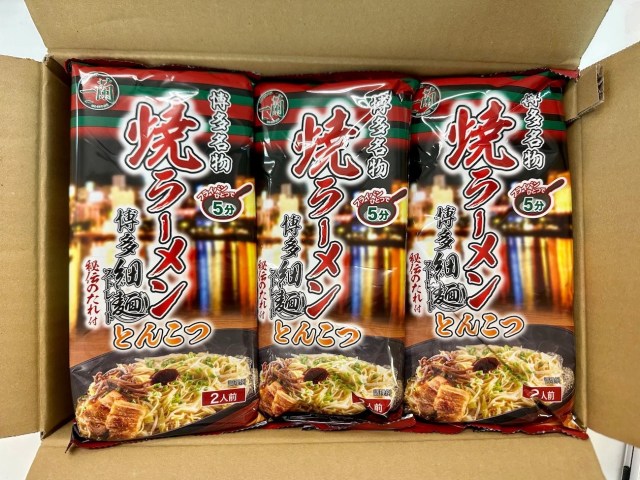
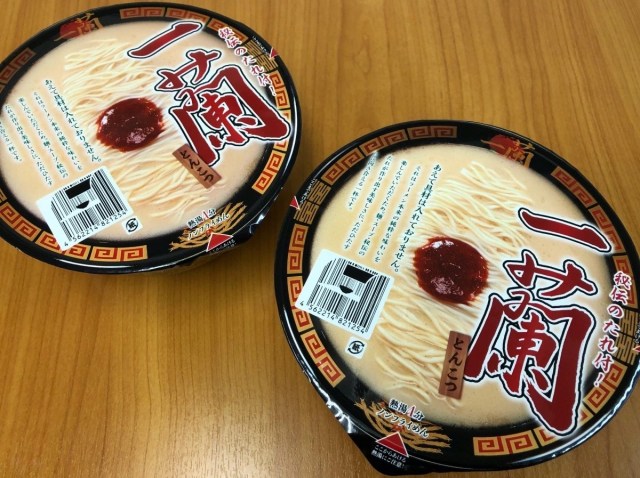
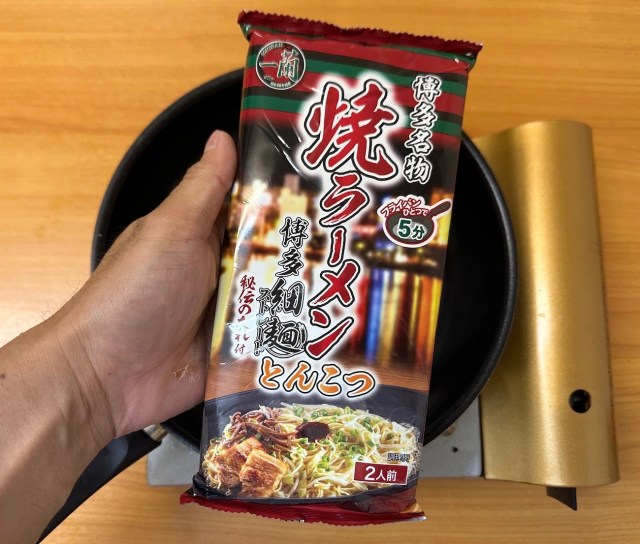

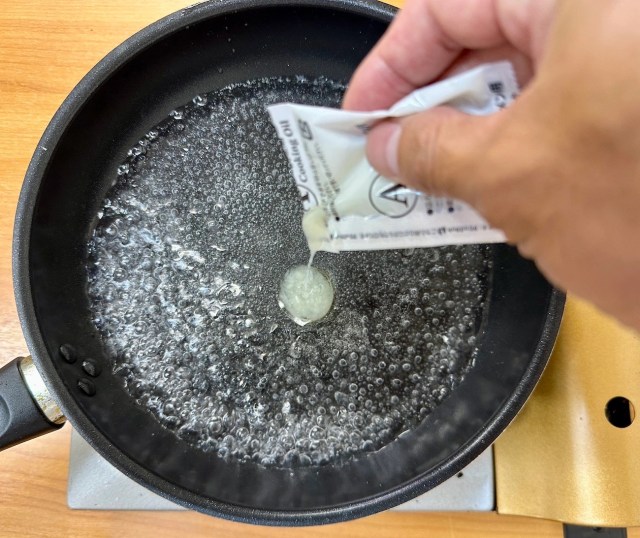
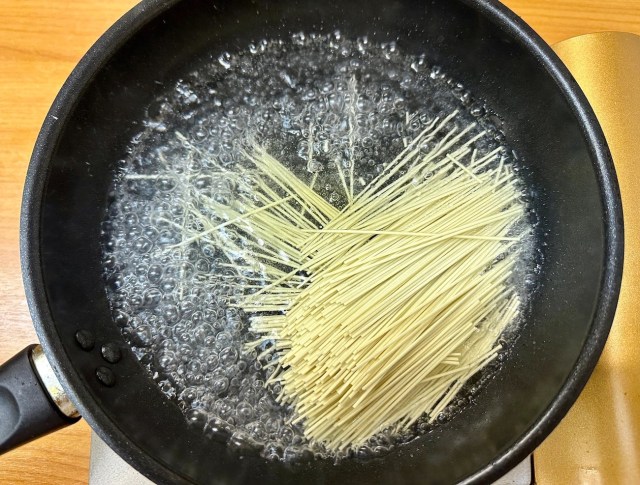
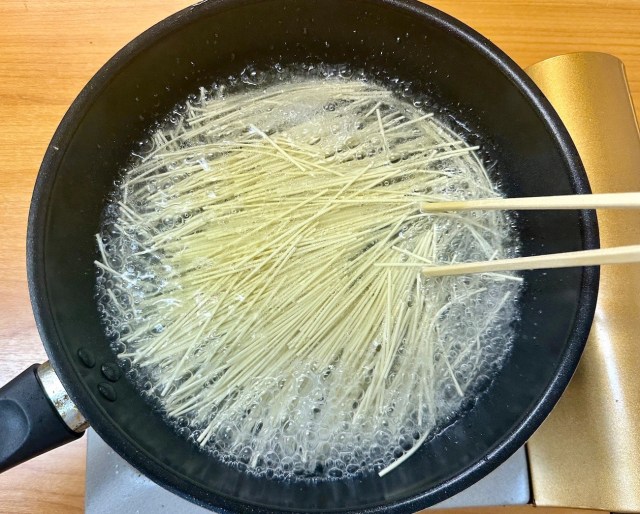
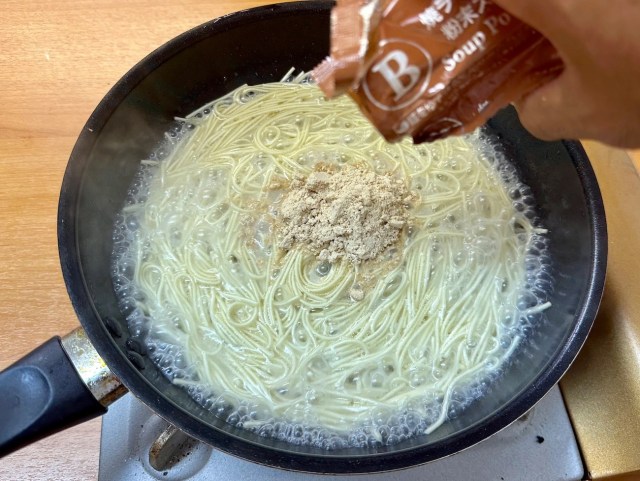
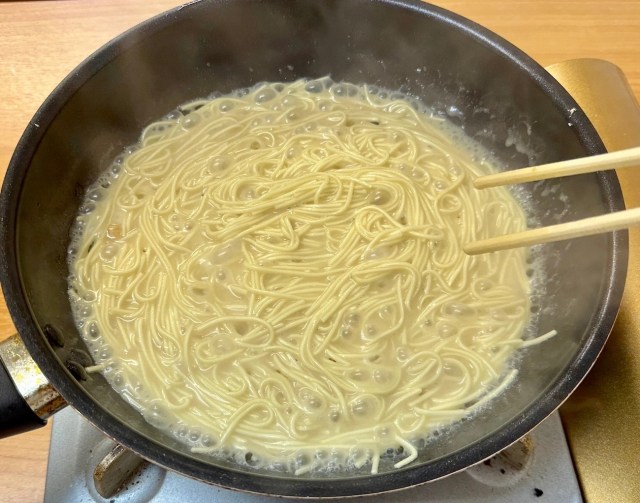
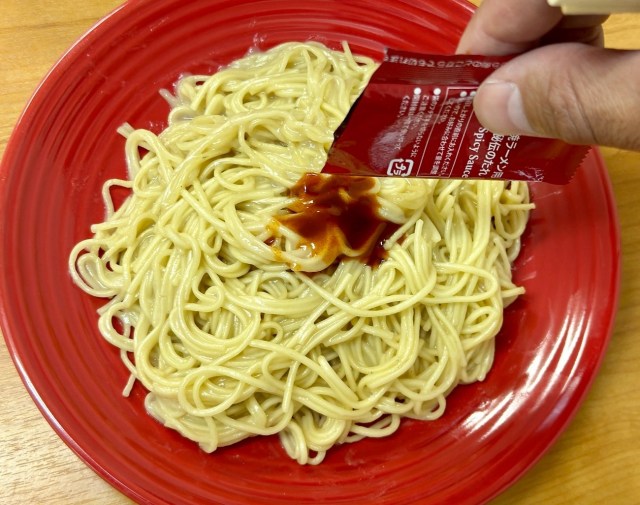
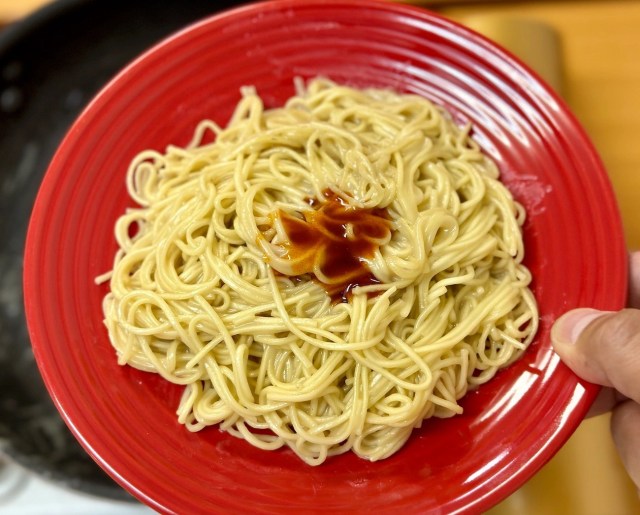
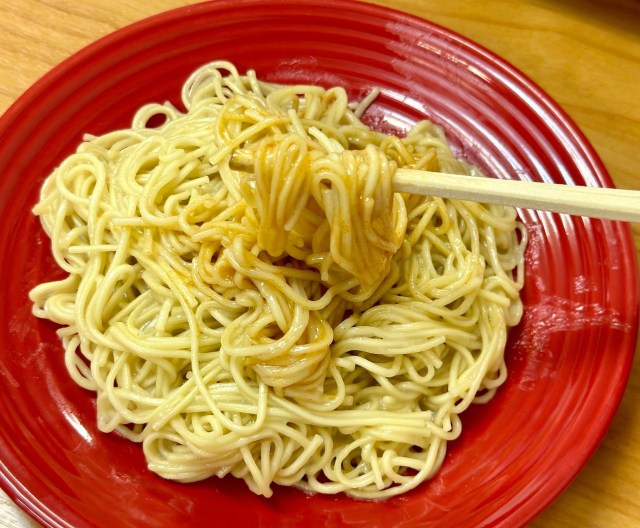
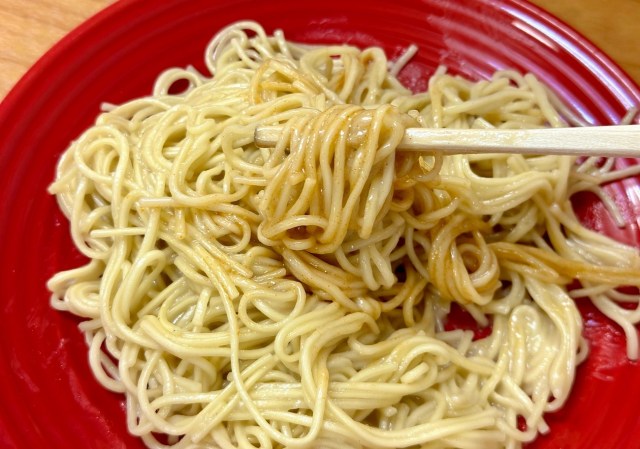
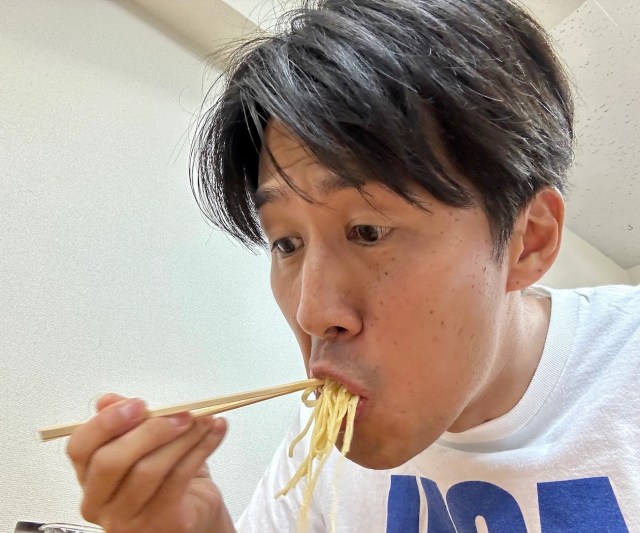
 Ichiran ramen lucky bag gives us everything we need to enjoy tonkotsu noodles at home
Ichiran ramen lucky bag gives us everything we need to enjoy tonkotsu noodles at home One of Japan’s best ramen chains now has a VR game that lets you cook their noodles【Video】
One of Japan’s best ramen chains now has a VR game that lets you cook their noodles【Video】 Ichiran ramen fukubukuro lucky bag comes with big and small surprises
Ichiran ramen fukubukuro lucky bag comes with big and small surprises Ramen chain gives you the full Ichiran experience at home with a build-it-yourself private booth
Ramen chain gives you the full Ichiran experience at home with a build-it-yourself private booth How to avoid queues at this Ichiran ramen restaurant in Japan
How to avoid queues at this Ichiran ramen restaurant in Japan Foreigner’s request for help in Tokyo makes us sad for the state of society
Foreigner’s request for help in Tokyo makes us sad for the state of society Japanese-style accommodation at the new Premium Dormy Inn hotel in Asakusa will blow your mind
Japanese-style accommodation at the new Premium Dormy Inn hotel in Asakusa will blow your mind Japanese city loses residents’ personal data, which was on paper being transported on a windy day
Japanese city loses residents’ personal data, which was on paper being transported on a windy day Mikado Coffee is a 76-year-old coffee chain with a major celebrity connection
Mikado Coffee is a 76-year-old coffee chain with a major celebrity connection Red light district sushi restaurant in Tokyo shows us just how wrong we were about it
Red light district sushi restaurant in Tokyo shows us just how wrong we were about it Seaside scenery, history, and so many desserts on Yokohama’s Akai Kutsu【Japan Loop Buses】
Seaside scenery, history, and so many desserts on Yokohama’s Akai Kutsu【Japan Loop Buses】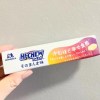 Do Hi-Chew-flavor Hi-Chews have a reason to exist?【Taste test】
Do Hi-Chew-flavor Hi-Chews have a reason to exist?【Taste test】 Kyoto bans tourists from geisha alleys in Gion, with fines for those who don’t follow rules
Kyoto bans tourists from geisha alleys in Gion, with fines for those who don’t follow rules Watch red pandas while you eat red panda curry at Japan’s Safari Land
Watch red pandas while you eat red panda curry at Japan’s Safari Land Japan’s massive matcha parfait weighs 6 kilos, contains hidden surprises for anyone who eats it
Japan’s massive matcha parfait weighs 6 kilos, contains hidden surprises for anyone who eats it McDonald’s new Happy Meals offer up cute and practical Sanrio lifestyle goods
McDonald’s new Happy Meals offer up cute and practical Sanrio lifestyle goods Japanese ramen restaurants under pressure from new yen banknotes
Japanese ramen restaurants under pressure from new yen banknotes French Fries Bread in Tokyo’s Shibuya becomes a hit on social media
French Fries Bread in Tokyo’s Shibuya becomes a hit on social media New private rooms on Tokaido Shinkansen change the way we travel from Tokyo to Kyoto
New private rooms on Tokaido Shinkansen change the way we travel from Tokyo to Kyoto Tokyo Tsukiji fish market site to be redeveloped with 50,000-seat stadium, hotel, shopping center
Tokyo Tsukiji fish market site to be redeveloped with 50,000-seat stadium, hotel, shopping center Beautiful Ghibli sealing wax kits let you create accessories and elegant letter decorations【Pics】
Beautiful Ghibli sealing wax kits let you create accessories and elegant letter decorations【Pics】 Secret Kitchen bento serves Japanese flowers, birds, wind and moon in a box, but is it worth it?
Secret Kitchen bento serves Japanese flowers, birds, wind and moon in a box, but is it worth it? New definition of “Japanese whiskey” goes into effect to prevent fakes from fooling overseas buyers
New definition of “Japanese whiskey” goes into effect to prevent fakes from fooling overseas buyers Our Japanese reporter visits Costco in the U.S., finds super American and very Japanese things
Our Japanese reporter visits Costco in the U.S., finds super American and very Japanese things Studio Ghibli releases Kiki’s Delivery Service chocolate cake pouches in Japan
Studio Ghibli releases Kiki’s Delivery Service chocolate cake pouches in Japan All-you-can-drink Starbucks and amazing views part of Tokyo’s new 170 meter-high sky lounge
All-you-can-drink Starbucks and amazing views part of Tokyo’s new 170 meter-high sky lounge More foreign tourists than ever before in history visited Japan last month
More foreign tourists than ever before in history visited Japan last month New Pokémon cakes let you eat your way through Pikachu and all the Eevee evolutions
New Pokémon cakes let you eat your way through Pikachu and all the Eevee evolutions Disney princesses get official manga makeovers for Manga Princess Cafe opening in Tokyo
Disney princesses get official manga makeovers for Manga Princess Cafe opening in Tokyo Sales of Japan’s most convenient train ticket/shopping payment cards suspended indefinitely
Sales of Japan’s most convenient train ticket/shopping payment cards suspended indefinitely Sold-out Studio Ghibli desktop humidifiers are back so Totoro can help you through the dry season
Sold-out Studio Ghibli desktop humidifiers are back so Totoro can help you through the dry season Japanese government to make first change to romanization spelling rules since the 1950s
Japanese government to make first change to romanization spelling rules since the 1950s Ghibli founders Toshio Suzuki and Hayao Miyazaki contribute to Japanese whisky Totoro label design
Ghibli founders Toshio Suzuki and Hayao Miyazaki contribute to Japanese whisky Totoro label design Doraemon found buried at sea as scene from 1993 anime becomes real life【Photos】
Doraemon found buried at sea as scene from 1993 anime becomes real life【Photos】 Tokyo’s most famous Starbucks is closed
Tokyo’s most famous Starbucks is closed One Piece characters’ nationalities revealed, but fans have mixed opinions
One Piece characters’ nationalities revealed, but fans have mixed opinions We asked a Uniqlo employee what four things we should buy and their suggestions didn’t disappoint
We asked a Uniqlo employee what four things we should buy and their suggestions didn’t disappoint Ichiran Ramen to open high-class and pricey “Ginza Ichiran” this month
Ichiran Ramen to open high-class and pricey “Ginza Ichiran” this month Ramen restaurant’s new branch has had continuous line of waiting customers for 250 hours
Ramen restaurant’s new branch has had continuous line of waiting customers for 250 hours What?!? Turns out kids eat for free at one of Japan’s best ramen chains, and hardly anyone knew
What?!? Turns out kids eat for free at one of Japan’s best ramen chains, and hardly anyone knew Japanese ramen cocktail uses tonkotsu pork broth for alcoholic noodle flavour
Japanese ramen cocktail uses tonkotsu pork broth for alcoholic noodle flavour This London ramen restaurant’s super-strange ramen shocks our Japanese taste-tester
This London ramen restaurant’s super-strange ramen shocks our Japanese taste-tester Clash of the instant ramen! Taste-testing seven instant noodles on a flavor trip across Kyushu
Clash of the instant ramen! Taste-testing seven instant noodles on a flavor trip across Kyushu How to make tonkotsu ramen at home 【SoraKitchen】
How to make tonkotsu ramen at home 【SoraKitchen】 Ichiran Ramen calendar features moving parts so you can make every day noodle day
Ichiran Ramen calendar features moving parts so you can make every day noodle day Ippudo serves up plant-based tonkotsu ramen in Japan for a limited time
Ippudo serves up plant-based tonkotsu ramen in Japan for a limited time People in Japan vote for their favourite ramen chain, with surprising results
People in Japan vote for their favourite ramen chain, with surprising results Ichiran ramen restaurant in Shinjuku has a unique system that’s captured hearts on Reddit
Ichiran ramen restaurant in Shinjuku has a unique system that’s captured hearts on Reddit Ramen-flavor cooking sauce now on sale from one of Japan’s favorite noodle chains
Ramen-flavor cooking sauce now on sale from one of Japan’s favorite noodle chains Tonkotsu ramen-flavoured chicken nuggets appear at Japanese convenience store
Tonkotsu ramen-flavoured chicken nuggets appear at Japanese convenience store Tonkotsu ramen rice bowl blows our minds, makes us appreciate noodles in a new light
Tonkotsu ramen rice bowl blows our minds, makes us appreciate noodles in a new light We found a popular Japanese ramen chain in South Korea!…or so we thought
We found a popular Japanese ramen chain in South Korea!…or so we thought Instant vs. Restaurant Ramen Project: Ippudo spicy miso tonkotsu battle【Taste test】
Instant vs. Restaurant Ramen Project: Ippudo spicy miso tonkotsu battle【Taste test】
Leave a Reply